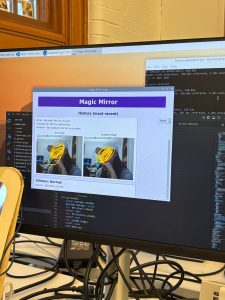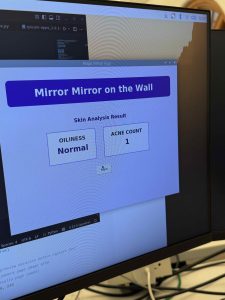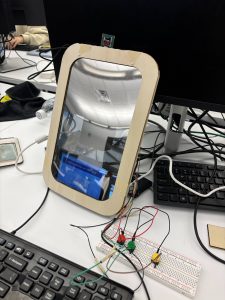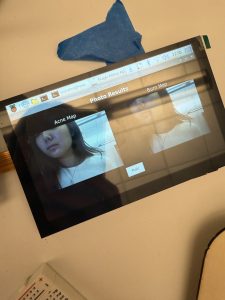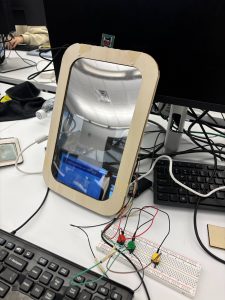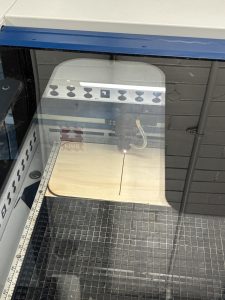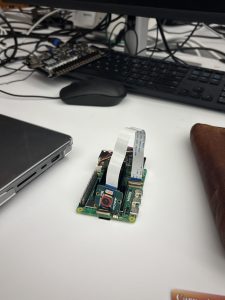Risks
After user testing, the most feedback we’ve gotten was the difficulty with the touchscreen interface. Even when the user pressed a button, our system’s app would not register it properly. To mitigate this, we made our essential buttons/controls larger so that it is easier to press.
We also had a lot of difficulty integrating the camera (it started throwing bugs after we switched the display). We fixed the problem by switching the camera port (for some reason, the original port threw errors for autofocus). We’re not sure why switching the port fixed the problem, but if we had to build the system again, these minor bugs are potential risks.
We also realized that during demo, where the mirror would sit affects user orientation. To make sure we don’t face difficulties on demo day, we will test it in the room we’ll have our demo in (somewhere in 1200 wing).
Changes
As we are approaching the end, we did not make any changes in our system expect for sizing of some buttons.
Schedule
No changes to the schedule! Our project has been finalized 🙂



